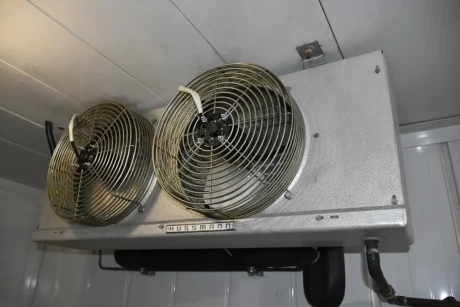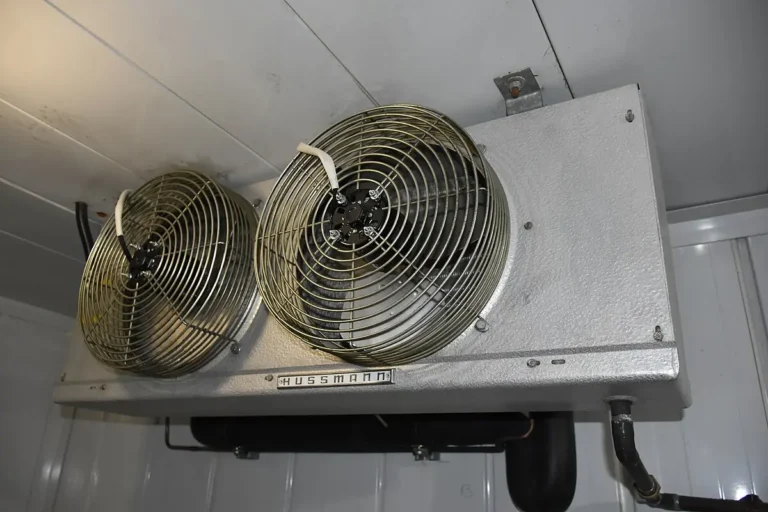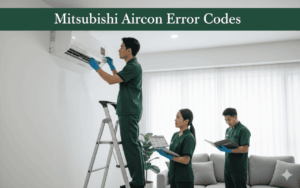Beating the Heat – Choosing Your Perfect AC Ally
Living in a hot climate presents a unique challenge: relentless heat often paired with sticky, high humidity, especially during rainy seasons. Surviving, let alone thriving, in such environments often necessitates a reliable air conditioning system. But stepping into the market reveals a bewildering array of options – Fan Coil Units (FCUs), Central Air systems, Ductless Mini-Splits, Window ACs – each promising cool relief. How does a homeowner choose the right cooling ally for their specific needs, whether they live in a compact apartment or a spacious house?
This guide aims to demystify the world of residential air conditioning. We’ll delve into the common AC systems available, comparing how they work, what they cost to buy, install, run, and maintain, how much upkeep they require, and how they perform in terms of cooling speed, energy efficiency, and that all-important humidity control. We’ll also look at lifespan, reliability, warranties, and what fellow homeowners are saying about their experiences. The goal is to equip you with practical knowledge to make an informed decision, ensuring your home becomes a comfortable haven from demanding climate conditions.
What is a Fan Coil Unit (FCU)?
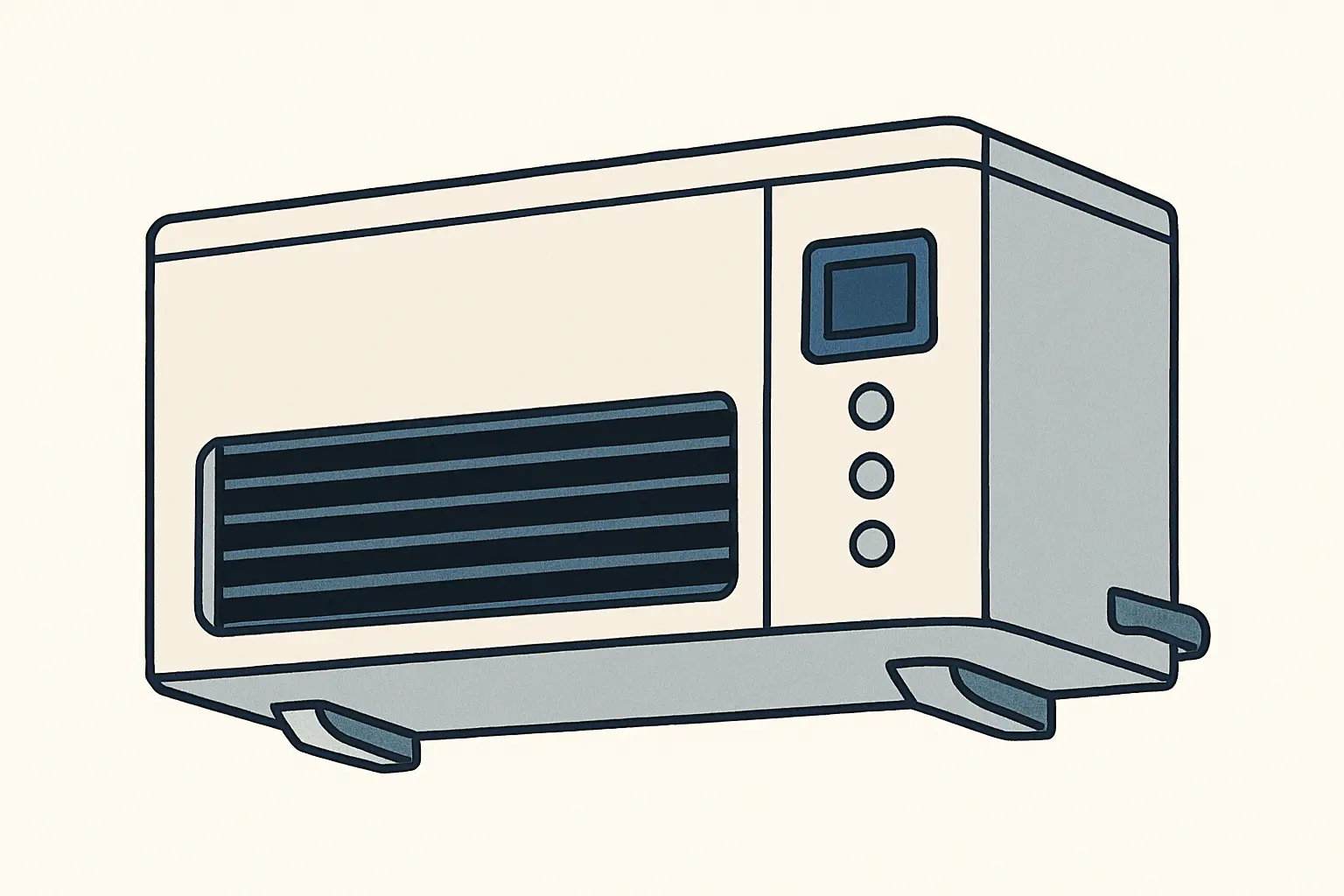
A Fan Coil Unit, or FCU (with FCU meaning aircon component in HVAC systems), is fundamentally a simple device containing a fan and a coil that can either heat or cool the air passing over it. It works by circulating the existing air within a room across this coil. FCUs Aircon are typically part of a larger Heating, Ventilation, and Air Conditioning (HVAC) system. The coil inside the FCU might contain chilled water supplied from a central chiller plant (common in large buildings like hotels, hospitals, or malls) or cold refrigerant supplied from a central condensing unit, possibly as part of a Direct Expansion (DX) or Variable Refrigerant Flow (VRF) system.
While frequently found in commercial settings, FCUs are also utilized in some residential contexts, particularly in apartment buildings with central cooling systems. They can be mounted in various ways, often suspended from the ceiling or mounted vertically on walls. One potential advantage is localized temperature control for the specific space the FCU serves. Capacities are often measured in airflow (CFM – Cubic Feet per Minute), with typical ranges spanning from around 400 CFM to over 2400 CFM. It’s important to understand that homeowners usually don’t purchase and install FCUs as standalone systems in the same way they buy a window or split AC; rather, they encounter them as the indoor component of a building-wide system.
What is a Split System?

Split air conditioning systems have gained significant popularity due to their flexibility and efficiency. Like central split systems, they have an outdoor unit (compressor/condenser) and one or more indoor units (air handlers). However, as the name suggests, they require no ductwork. The indoor and outdoor units are connected only by a conduit containing refrigerant tubing, electrical wiring, and a condensate drain line, requiring just a small hole through the wall.
Indoor units come in various styles, including high-wall mounted (most common), ceiling recessed cassettes, floor-mounted consoles, and even concealed ducted types for specific applications. Zone control is a key advantage, as each indoor unit typically has its own thermostat or remote, allowing independent temperature control for different rooms or zones. Multi-zone systems can connect several indoor units to a single outdoor unit. Split systems eliminate energy losses associated with ductwork (which can account for 20-30% of energy loss in central systems), making them highly efficient. Many models utilize inverter technology, further boosting efficiency. Installation is less invasive and often quicker than installing a full ducted central AC system, especially in homes without pre-existing ductwork. Most mini-splits are heat pumps, capable of providing both cooling and efficient heating by reversing the refrigeration cycle.
Other Systems Homeowners Should Know
Window air conditioners are perhaps the most recognizable type, consisting of a single, self-contained unit that houses all components – compressor, condenser coils, evaporator coils, and fans – within one casing. These units are typically mounted in a window or through a dedicated opening in a wall. Designed primarily to cool a single room, window ACs are known for their relative affordability and straightforward installation process. This makes them a popular choice for smaller rooms (typically under 150-180 sq ft), renters who need a non-permanent solution, or those on a tighter budget. While traditionally known for fixed-speed compressors, newer models increasingly feature inverter technology, offering improved energy efficiency and potentially quieter operation.
Central air conditioning is designed to cool an entire home uniformly. It operates by circulating air through a network of supply and return ducts connected to a central indoor unit, often called an Air Handling Unit (AHU) or furnace, and an outdoor unit containing the condenser and compressor. Warm air is drawn from the house via return ducts, cooled as it passes over the indoor unit’s evaporator coil, and then distributed back throughout the home via supply ducts and registers (vents). Understanding the difference between AHU and FCU is important: while both handle air, an AHU typically serves a larger area through ductwork, while FCUs are smaller units serving individual spaces.
A modern evolution relevant to larger apartments or houses is the Variable Refrigerant Flow (VRF) or Variable Refrigerant Volume (VRV) system. These systems connect a single, often compact, outdoor unit to multiple indoor units using refrigerant lines, much like multi-zone mini-splits but often on a larger scale. VRF/VRV offers central-like whole-home cooling with individual zone control but avoids the need for extensive, bulky traditional ductwork, making it an appealing alternative to installing numerous individual split ACs or a complex ducted system. They are known for space-saving outdoor units and potential energy efficiency.
How Different AC Systems Work

While the packaging differs, most common AC types rely on the same fundamental principle: the refrigeration cycle. Understanding this basic process helps demystify how they cool your home and tackle humidity.
At the heart of these systems is a special chemical called a refrigerant, which cycles between liquid and gas states. The cooling cycle begins with evaporation, where warm air from inside your room is pulled by a fan across a set of cold coils (the evaporator coil) located inside the indoor unit. Inside these coils, the low-pressure liquid refrigerant absorbs heat from the air, causing the refrigerant to evaporate into a gas and cooling the air significantly. The refrigerant, now a cool gas carrying heat from your room, travels to the compressor located in the outdoor unit. The compressor pressurizes the gas, making it very hot. This hot, high-pressure refrigerant gas flows into another set of coils (the condenser coil) in the outdoor unit. A second fan blows outdoor air across these coils, and since the refrigerant is hotter than the outside air, it releases its absorbed heat to the outdoors, causing the refrigerant to condense back into a high-pressure liquid. The high-pressure liquid refrigerant then passes through an expansion valve, which drastically reduces its pressure and temperature, turning it back into a very cold, low-pressure liquid, ready to return to the evaporator coil and repeat the cycle.
Air distribution methods differ between systems. In central air, the cooled air from the indoor evaporator coil is pushed by the Air Handling Unit blower through a network of ducts to various rooms, with return ducts bringing warm air back to the AHU. With mini-splits, the indoor unit’s fan blows the cooled air directly into the room where it’s located, with no ducts involved. Window ACs have a fan on the indoor side that blows cooled air directly into the room, while the fan on the outdoor side expels heat.
An FCU’s operation is simpler locally but depends on the central system. A fan within the unit draws room air across its coil, which is supplied with either centrally chilled water or cold refrigerant from a larger system. The air gets cooled by transferring heat to the cold fluid in the coil and is then blown back into the room. It primarily functions as the air circulation and heat exchange point within the room for a larger system. Learn more about various aircon parts and their functions to better understand how your system works.
A crucial function, especially in humid climates, is dehumidification. As warm, moist room air passes over the cold evaporator coils in any refrigerant-based AC, the air temperature drops below its dew point. This causes the excess water vapor in the air to condense into liquid water on the coils, much like water droplets forming on a cold glass. This collected water drips into a drain pan and is removed from the room via a condensate drain line. This process inherently removes moisture from the air while cooling it. The effectiveness can depend on how long the cooling cycle runs and whether the AC has specific dehumidification modes.
Comparing Costs: Your AC Budget
Purchase and Installation Costs
The initial purchase price is often the first factor homeowners consider. Window ACs are generally the most budget-friendly option, with prices for a standard unit being significantly lower than other options. Newer inverter window AC models are available and might command slightly higher prices but offer better efficiency.
Split systems have a much wider price range, generally starting higher than window units. Prices are heavily influenced by the brand, energy efficiency ratings, and features like inverter technology and smart connectivity. If you’re considering specific brands, comparing popular options like Daikin and Mitsubishi can help you make a more informed decision based on performance, features, and price points.
Central AC represents the highest upfront investment. Installing a VRF/VRV system suitable for a typical home can cost considerably more than individual units, depending on the scale and complexity. Larger VRF systems can be quite expensive, indicating the potential scale of investment.
For Fan Coil Units, listing individual FCU prices can be misleading for homeowners comparing purchase options. FCUs are typically components of a larger, integrated building HVAC system. Their cost is usually factored into the overall system installation or the building’s infrastructure cost, not purchased individually like a window or split AC.
Installation costs add another layer to the initial budget. Window AC installation is typically the simplest and cheapest, assuming a suitable window or wall opening already exists. It’s often a straightforward process of securing the unit in the frame, though minor modifications, sealing gaps, or adding support brackets might incur extra charges.
Split AC installation is more involved and thus more expensive. This base price usually covers mounting the indoor and outdoor units within a standard distance and connecting them. However, costs escalate quickly if extra materials or work are needed, such as additional copper piping beyond the standard length, extended drain pipe, extra electrical wiring or new socket installation, outdoor unit mounting brackets, or core cutting or drilling through walls. The quality of installation significantly impacts the AC’s performance, efficiency, and likelihood of future issues like gas leaks.
Central AC installation is the most complex and costly. Traditional ducted systems require designing and installing ductwork throughout the house, which can be highly invasive and expensive. VRF/VRV system installation avoids bulky ducts but still involves extensive refrigerant piping connecting the single outdoor unit to multiple indoor units, along with complex wiring and control systems.
Energy Consumption and Running Costs
Operating costs, primarily electricity consumption, are a major long-term expense. Several factors influence how much your AC adds to your monthly bill.
Energy efficiency is the most critical factor. A higher efficiency rating means the AC removes more heat per unit of energy consumed, making it more efficient and cheaper to run. Most countries have their own energy efficiency rating systems and labels to help consumers identify more efficient models.
Inverter ACs adjust their compressor speed based on cooling demand, generally consuming less power over time compared to fixed-speed ACs that cycle fully on and off. Split ACs also avoid the 20-30% energy loss that can occur through leaky ductwork in central systems.
To understand the impact on your electricity bill, consider that more efficient units (higher star/energy ratings) can cost significantly less to operate. A high-efficiency split AC might use half the electricity of a standard window unit for the same amount of cooling. This can translate to substantial savings over the lifetime of the unit, especially in areas with high electricity costs or extended cooling seasons.
Long-Term Maintenance Expenses
Beyond electricity, factor in the cost of keeping your AC running smoothly. Regular professional servicing is essential for all AC types to maintain efficiency, prevent breakdowns, and ensure longevity. Annual servicing is the minimum recommendation, often required for warranty validity. In humid, dusty, or high-pollution environments, bi-annual servicing or checks every 6 months might be beneficial for heavy users.
Basic cleaning service for Window or Split ACs typically costs less than more intensive deep cleaning services. Annual Maintenance Contracts (AMCs) are offered by brands and service providers, bundling services for a yearly fee. Professional aircon services can help ensure your system runs efficiently throughout its lifespan.
Repair costs can vary widely. Gas leak repair and refrigerant recharge is a common issue and can be costly. Minor parts replacement might be relatively inexpensive, while major component failures are costly. Compressor replacement can be very expensive. A significant concern, particularly with inverter ACs, is Printed Circuit Board (PCB) failure, which can also be expensive to replace if out of warranty. Window ACs, being single units with potentially simpler mechanics, might have lower repair costs compared to splits, which involve two units and more complex components, potentially leading to higher repair bills. Using ACs with copper condenser coils is often recommended, especially in coastal or polluted areas, as copper is more resistant to corrosion than aluminum or alloys, potentially reducing leaks and extending lifespan.
Cooling Performance and Comfort Factors
Cooling Capacity and Speed
The perception of cooling speed can vary between systems. Split ACs are often perceived as cooling faster, especially inverter models. Features like ‘Turbo Mode’ or ‘Power Chill’ are common, designed for rapid temperature reduction. Advanced airflow designs, like 4-way swing, help distribute cool air more quickly and evenly throughout the room. Their availability in higher capacities also contributes to faster cooling of larger spaces.
Window ACs are generally effective for the single room they are sized for. However, compared to a split AC of the same capacity, they might feel slower in cooling the space, possibly due to less sophisticated airflow distribution or slightly lower efficiency. Turbo modes are also available on some window models.
Central AC provides cooling to the entire house simultaneously. The speed at which a specific room cools depends on the overall system capacity, the duct design delivering air to that room, and how well the system is balanced. It might take longer initially to cool the whole house compared to a single split cooling one room, but it maintains whole-house comfort once achieved.
For Fan Coil Units, the cooling speed depends directly on the capacity of the central chilled water or refrigerant system feeding it, and the fan speed of the FCU itself.
Tackling Humidity
All refrigerant-based ACs remove some humidity as a byproduct of cooling. However, in extremely humid conditions, standard cooling might not be enough to achieve comfortable dryness.
Many modern Split ACs, and increasingly Window ACs, come equipped with a specific ‘Dry’ or ‘Dehumidify’ mode. This mode typically runs the compressor at a low speed or cycles it while keeping the fan running, optimizing moisture removal without overcooling the room – a highly desirable feature for humid climates.
Systems that run longer, more consistent cooling cycles tend to be better at dehumidification. Inverter ACs, which often run continuously at lower speeds to maintain temperature, can excel at this compared to non-inverter units that cycle on and off abruptly. Similarly, properly sized central AC systems designed for longer run times can also manage humidity well. Oversized units that cool too quickly and shut off (short cycling) are poor at dehumidification.
AC brands targeting humid markets often highlight features like strong dehumidification capabilities alongside anti-corrosion coatings. It’s worth noting that standard air coolers work by evaporating water, which adds humidity to the air, making them generally unsuitable for already humid climates.
For residents in humid areas, prioritizing an AC with a dedicated dehumidification mode and appropriate sizing is crucial for year-round comfort, not just temperature reduction.
Energy Efficiency Ratings Explained
Energy efficiency is a major consideration impacting long-term costs. Most countries have their own efficiency rating systems for air conditioners. These ratings represent the ratio of the cooling output to the energy consumed. A higher rating value directly translates to lower electricity consumption for the same amount of cooling.
Energy efficiency labels typically assign ratings based on predefined ranges. Higher ratings mean higher efficiency. However, these ranges are often different for different types of systems, and the standards are periodically made stricter by regulatory agencies.
Split ACs generally offer the highest potential efficiency. Inverter models dominate the higher efficiency ratings. Their ductless design inherently avoids the significant energy losses (estimated at 20-30%) that can occur in central AC ductwork.
Window ACs are traditionally considered less efficient, though newer inverter models are closing the gap. Crucially, a high-efficiency window AC is generally NOT as efficient as a high-efficiency split AC due to the different rating scales often used. Potential air leakage around the window unit installation can also reduce overall efficiency.
Central AC efficiency varies greatly depending on the unit’s own efficiency rating, the quality and insulation of the ductwork (leaky ducts severely impair efficiency), and whether the system was correctly sized and installed. Modern VRF/VRV systems can achieve very high efficiencies.
For FCUs, the efficiency is determined by the central system (chiller, boiler, VRF) providing the heating/cooling medium and the control strategy. Using variable speed fans in the FCU can contribute to energy savings.
For homeowners actively choosing a system, prioritizing a high efficiency rating (within budget) is the most direct way to manage long-term electricity costs. Remember to compare actual efficiency values when possible, rather than just ratings, especially when comparing different AC types.
Lifespan, Reliability, and Warranty Insights
Air conditioner lifespan isn’t fixed; it depends heavily on the type of unit, brand quality, usage patterns, maintenance regularity, and the operating environment. Window ACs generally have a lifespan ranging from 5 to 15 years. Well-maintained, quality units might last 10-15 years, with some reports suggesting potential for up to 20 years with diligent care. Anecdotal evidence from users suggests that older, simpler non-inverter window ACs can be particularly long-lived, sometimes exceeding 15 years with basic maintenance.
Split ACs, including mini-splits, have a commonly cited average lifespan of around 10 to 15 years. Some sources suggest well-maintained ductless mini-splits could reach up to 20 years. Specifically for inverter split ACs, estimates often fall in the 12 to 15-year range. However, there are contrasting reports and user concerns suggesting that the complex electronics in inverter models might lead to earlier failures, potentially around 4-6 years, primarily due to PCB issues.
Central AC systems typically last between 10 and 15 years, with potential to reach 15-20 years or more if properly maintained. Fan Coil Units’ lifespan depends on the individual unit’s build quality and the maintenance schedule of the overall building HVAC system.
Lack of maintenance is consistently cited as the top reason for breakdowns. Neglecting filter cleaning and professional servicing leads to dirty coils, restricted airflow, system strain, and ultimately, component failure. Refrigerant leaks are a very common problem across AC types, resulting from installation errors, vibration, corrosion, or general wear and tear. Low refrigerant leads to poor cooling, inefficiency, and can damage the compressor.
Electrical failures involving capacitors, contactors, relays, wiring, or the main control board (PCB) can cause the AC to malfunction or stop working entirely. The compressor, as the “heart” of the AC, can experience failure due to refrigerant issues, electrical problems, lack of lubrication, or general wear, representing a major and expensive repair. Fan motor problems, thermostat malfunctions, and drainage problems are also common issues.
A particular concern for inverter ACs is PCB failure. The Printed Circuit Board that controls the variable-speed compressor is a potential point of concern regarding reliability and repair cost. Power fluctuations can also damage sensitive PCBs, making a good quality voltage stabilizer potentially beneficial in some areas.
High humidity, salty air, and urban pollution accelerate corrosion, particularly on the outdoor unit’s condenser coils and other metal components. This can lead to refrigerant leaks, reduced efficiency, and shortened lifespan. Choosing ACs with copper coils (which resist corrosion better than aluminum/alloys) and protective coatings is recommended for durability in challenging environments.
Most brands offer a standard 1-year comprehensive warranty on the entire AC unit, covering the cost of parts and labor for repairs due to manufacturing defects during the first year. Brands heavily market longer warranties on specific key components, with a 5-year or 10-year warranty on the compressor being standard practice. It’s crucial to note that this extended warranty often covers only the compressor part itself; labor charges and costs for refrigerant gas needed during replacement may not be covered after the initial comprehensive warranty period expires.
Recognizing the concerns around inverter AC electronics, many reputable brands now offer a separate extended warranty on the PCB, typically for 5 years. Warranties typically require installation and servicing to be done by authorized technicians to remain valid. The widely advertised long compressor warranty might be less impactful in practice than a solid PCB warranty combined with the comprehensive coverage, as PCB issues or other component failures might occur sooner than a compressor failure.
Real Experiences: What Homeowners Think
Online forums and reviews offer valuable insights into real-world experiences with different AC types and brands. Split ACs are frequently praised for quieter operation compared to window units, as the noisy compressor is outside. Their sleek appearance is considered more aesthetically pleasing. Many users find their cooling efficiency to be good, especially with inverter models offering energy savings and consistent temperatures.
Window ACs’ primary appeal lies in lower upfront cost and significantly easier installation and maintenance. Many find their cooling performance perfectly adequate, especially for smaller rooms. They are often seen as a good value proposition for renters or those on a budget. Some users appreciate the consistent sound as ‘white noise’, and older non-inverter models are sometimes lauded for their robustness and long lifespan.
On the downside, split ACs have higher initial purchase and installation costs. Installation can be complex and requires professional help, with poor installation practices cited as a cause of future problems. Refrigerant (gas) leaks are a frequently mentioned issue, and repairs/recharges are costly. The cost of repairs, especially for failed PCBs in inverter models, is a major concern for long-term ownership. After-sales service quality is often criticized as inconsistent or unresponsive across various brands.
Window ACs’ most common complaint is noise, as all components are housed in the single unit inside the room. They block window space, reducing natural light and ventilation. Their appearance is often considered less aesthetically pleasing than splits. Non-inverter models can be less energy efficient than inverter splits, and they may struggle to cool larger rooms effectively.
Many users emphasize the importance of choosing ACs with 100% copper condenser coils for durability in humid or coastal climates. Aluminum condensers are viewed with skepticism due to potentially shorter lifespans in these environments.
Some users and even local dealers express a preference for the perceived simplicity and repairability of non-inverter ACs over inverter models, citing the high cost and potential fragility of inverter PCBs. This suggests a segment of the market prioritizes long-term, low-cost maintenance over potential energy savings, especially if usage isn’t extremely high.
Making the Right Choice for Your Home
Consider room size and cooling load carefully. Measure your room’s square footage accurately and use standard guidelines as a starting point. Adjust upwards for factors increasing heat load: high ceilings, top floor location, large windows with direct sun exposure, high occupancy, or kitchen heat sources nearby. Factor in local climate conditions – slightly oversizing might be better than undersizing in very hot or humid regions, but avoid gross oversizing which harms dehumidification and efficiency.
Determine your budget for purchase and installation. Weigh the lower upfront cost of Window ACs or basic Splits against the potentially lower running costs of high-efficiency inverter models, especially if you anticipate heavy usage. Factor in local electricity costs and consider potential long-term repair costs.
Check installation feasibility and constraints. Do you have a suitable window or wall opening for a Window AC? For Split/Central/VRF, is there adequate, accessible space for the outdoor unit? Are there feasible routes for refrigerant piping and condensate drainage with minimal disruption? Are there building rules or landlord restrictions regarding AC installation?
Prioritize higher efficiency ratings, especially for frequently used rooms in areas with high electricity costs. Look beyond just the rating; compare actual efficiency values if possible. Remember Window and Split AC ratings aren’t directly comparable.
For humid climates, look for models explicitly mentioning ‘Dehumidification’ or ‘Dry’ modes. Inverter ACs running longer cycles may offer better humidity removal than basic on/off units.
Consider the room’s use when thinking about noise levels. Split ACs are generally significantly quieter indoors. Check the decibel (dB) rating if available.
In high-pollution environments, features like dust filters, PM 2.5 filters, or anti-bacterial coatings can be beneficial for health and comfort. Consider models with copper condenser coils for better corrosion resistance and look for anti-corrosion coatings on coils, especially for the outdoor unit if you live in a coastal or highly polluted area.
Compare warranty terms carefully: duration of comprehensive warranty (usually 1 year), compressor warranty (5 or 10 years), and crucially for inverter models, PCB warranty (aim for 5 years). Understand what’s covered (parts only vs. parts & labor).
Research the reputation and responsiveness of the brand’s authorized service network in your area, as experiences can vary locally. Check online reviews, ask neighbors or local dealers. Prompt and reliable service is crucial for minimizing downtime during hot weather.
Maintenance Essentials for Your AC
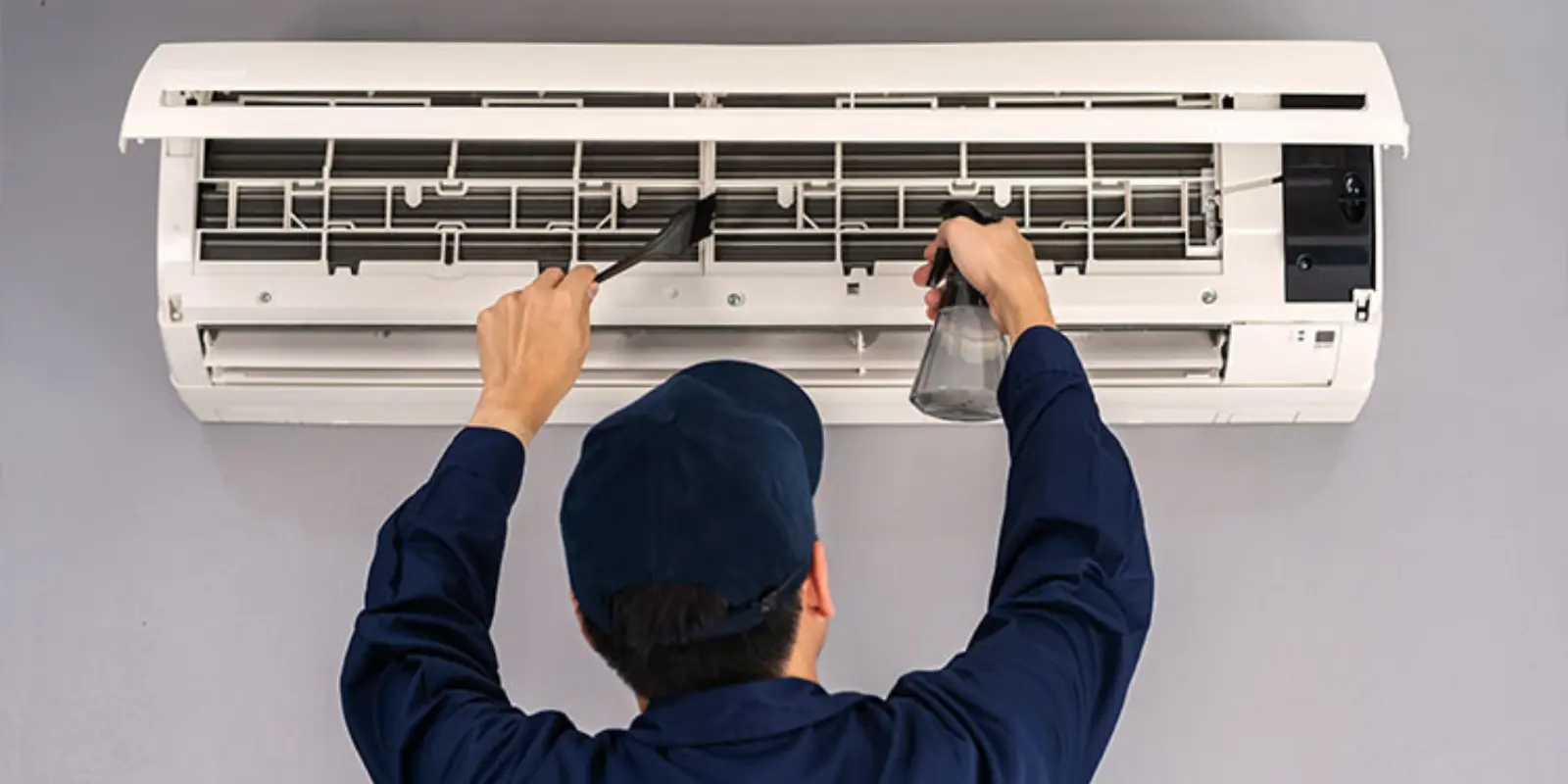
Proper maintenance is key to keeping any air conditioner running efficiently, effectively, and for its full expected lifespan. Clean or replace air filters regularly – this is the single most important DIY task. Dirty, clogged filters restrict airflow, forcing the AC to work harder, reducing cooling efficiency, increasing energy consumption, and potentially leading to problems like coil freezing and water leaks. Check filters monthly, especially during heavy use seasons, and clean or replace them at least every 1-3 months, or more often if you have pets, allergies, or live in a dusty environment.
For the outdoor unit of split or central systems, regularly clear away leaves, grass clippings, dirt, and any obstructions from around the unit to ensure clear airflow. You can gently hose down the exterior fins to remove accumulated dirt.
Check the condensate drain regularly. A clogged drain line can cause water to back up and leak inside your home, potentially causing water damage and promoting mold growth. Visually inspect the drain outlet to ensure water is dripping freely when the AC runs. Periodically, you can help prevent clogs by pouring a mixture of equal parts white vinegar and water, or a mild bleach/water solution, down the drain line access point.
While DIY tasks are helpful, professional servicing is essential for deeper cleaning, technical checks, and preventative care. Most manufacturers and experts recommend professional servicing at least once a year, ideally before the peak cooling season begins. In high humidity, dust, pollution, or areas with longer cooling seasons, servicing twice a year or every 6 months if the AC is used heavily might be advisable to ensure optimal performance and longevity. Learn about different types of aircon services to determine which is best for your system’s needs.
Window AC servicing is generally simpler and potentially cheaper as it’s a single unit. Split ACs require servicing both the indoor and outdoor units. Central AC and VRF systems are more complex and require technicians with specific expertise. For FCUs in apartment buildings, maintenance is often handled by the building management or included in common maintenance charges, but residents should confirm this.
Learn to recognize warning signs of AC problems. If your AC isn’t cooling or is blowing warm air, check if the thermostat is set correctly, the filter is clean, and the outdoor unit isn’t blocked. Several signs indicate your aircon needs servicing, including water leaking indoors or outdoors which might indicate a clogged condensate drain line, extremely dirty filter causing coil freezing, or incorrectly tilted unit. Strange noises like rattling, buzzing, grinding, or squealing could signify loose parts, failing fan motor or bearings, compressor issues, or electrical problems. If your AC won’t turn on, check if it’s plugged in, if the circuit breaker has tripped, or if thermostat batteries are dead. Frequent cycling on and off might be due to dirty filters or coils, system oversizing, or low refrigerant levels. Musty or foul odors could indicate mold or mildew growth inside the unit or ducts.
Finding Help: Technician Selection and FCU Maintenance
Proper installation and maintenance are critical for performance and longevity. Always try to use brand-authorized technicians for installation and warranty-period servicing to ensure warranty validity. Look for technicians or companies with good local reviews and clear pricing. Experience and reputation are key indicators of quality service.
As discussed, annual professional service is standard, potentially more often in challenging climates due to environmental conditions. Basic service costs vary by region and type of system. When you need professional help, consider booking reliable aircon servicing to ensure your system is properly maintained by qualified technicians.
A crucial point for residents in buildings with central cooling systems using FCUs: who is responsible for maintaining the FCU within your apartment? Unlike individually owned window or split ACs, the FCU is part of the building’s common infrastructure. Typically, the maintenance of the core system (chiller, pumps, main pipes) and often the FCU itself (cleaning coils, checking valves, fan motor) falls under the responsibility of the building management, funded through the regular maintenance charges collected from residents. These charges cover the upkeep of common areas and facilities, which usually includes central services like HVAC. However, specific responsibilities might vary based on the building’s policies. It is essential for residents in such buildings to clarify the exact scope of FCU maintenance covered by the common maintenance fees versus any responsibilities that might fall on the individual owner/tenant.
